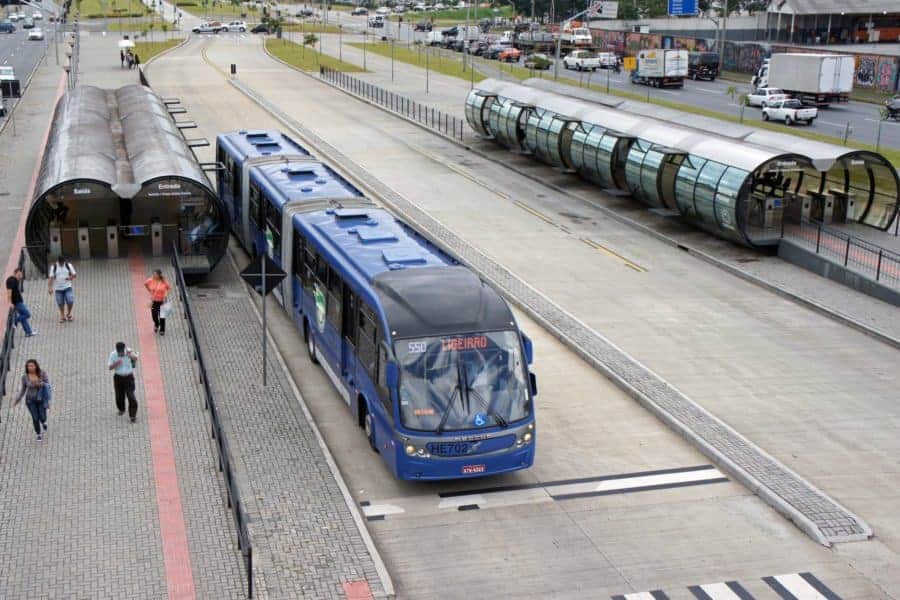
So often, the question comes up in cities looking to make improvements in their public transit service offerings and systems regarding what type of service and system is best suited to meet the majority or mass-public need. Services and systems suggested often run the gamut, after which a thorough review and narrowing of selections are made, public input typically being an integral part of the discussion process; after all, the populace is the transit-served here.
Harkening back to the early days when cities were considering upgrading beginning circa 1920, the transportation choices made were comparatively easy. Back then, cars were making serious inroads as buying an automobile became within the realm of possibility for more and more people over time. As the electric street and interurban railway systems more and more fell into disfavor with the general riding public and car travel became more and more preferable, one by one these electrified passenger railways began to close. But recognizing that transit service still needed to be provided, it was buses more often than not that served in their predecessor’s place.
So, fast forward to the mid-to-late ‘60s and early ‘70s.
In the San Francisco Bay Area there was a transit revolution afoot. All but a couple of Bay Area counties formed a coalition whose aim was to build a modern railway rapid transit system that would offer an alternative to congested roadway travel.
Known as the Bay Area Rapid Transit District or BART, the network proved invaluable in the wake of the Loma Prieta earthquake of Oct. 17, 1989. While much of the region’s highway infrastructure was rendered unusable, BART came through the ordeal practically unaffected.
Incidentally if not interestingly, the city of San Francisco itself kept its existing trolley system intact. There are a number of North American cities in fact that did likewise. Among them are Boston, Cleveland, Newark, New Orleans, Philadelphia, Pittsburgh and Toronto, Ontario, Canada.
Enter BRT
So, why BRT or bus rapid transit and why not just regular workaday transit buses?
BRT systems, if designed, built and operated at an optimum level, can do what conventional bus systems cannot: They do what regular operations do but do more expeditiously. This can be accomplished through the use exclusive rights-of-way, faster passenger boarding and discharging, fewer stops, route optimization as well as traffic signal prioritization.
According to city planner Jeff Speck in his 2012 book: “Walkable City: How Downtown Can Save America, One Step at a Time,” Boulder, Colorado’s bus operation serves this Rocky Mountain community quite well.
Since the mid-90s, growing considerably in both employment opportunities and size, the city at the time of the “Walkable City” book release, quite remarkably, had not experienced any rise in vehicle travel miles and the bus system by and large is to be credited.
Effective marketing has played a significant role apparently in attracting riders, the underlying premise or principle here being clean air. Along these lines, if each bus eliminated as many as 50 individual automobile moves, that’s 50 autos that are not occupying roads, and by virtue of this, the exhaust from such which would otherwise be entering the surrounding air, isn’t. And if buses are zero-emissions themselves, then even better.
Indications are though that Boulder’s bus system is an exception to the rule. Cleveland, Ohio’s and Ottawa, Ontario, Canada’s BRTs are examples of others.
So, opting to install BRT in place of conventional bus could prove iffy. The idea here in doing so is to not only hold onto existing users, but also to attract new ones.
Like the streetcar, or its more modern cousin, light rail transit, can be an element of what’s known as TOD (transit-oriented development), BRT can as well be a component of such. Along-the-route business and residential can indeed feed riders to the serving entity. People living in transit-proximate apartments, for example, can take advantage of the connected transit-alternative offering.
Whether bus or train, each can serve faithfully serve in that capacity. People just need to get on board.
from ScienceBlog.com https://ift.tt/3pYiH72
No comments:
Post a Comment